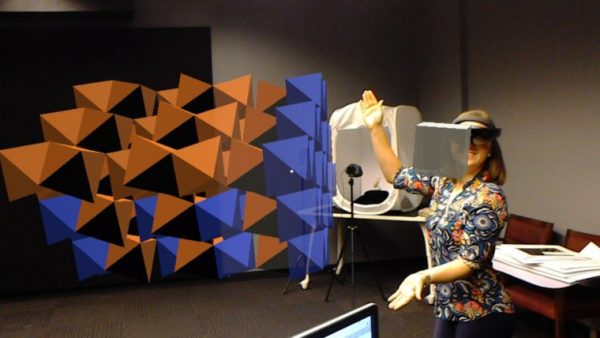
“Graduate student Kelsey Prissel inspects a crystal lattice, a geometric representation of the repeating arrangement of atoms in a mineral.” © Washington University (wustl.edu)
It’s no secret that technology has made huge advancements in the last decade. And those advancements have moved into the educational landscape with the exploration of technologies for student usage.
Inventions such as the Microsoft HoloLens have allowed students at Washington University in St. Louis and Hamilton College in Clinton, NY, to see crystal structures and anatomic make-ups in hologram form.
The benefit? Instead of a flat, printed image, students are able to identify structures from human organs, buildings or molecules in real form.
Additionally, new video platforms with AI integration (like MUVI, Wedia and Kaltura) are introducing the same AI-filtering capabilities that Netflix uses for their educational content. This filter will allow for material access to be personalized from student-to-student and easily accessible through set filters and previously viewed content.
Interested in more AI and VR educational resources? I recommend reading more about specific implementations and 2019 predictions in the following Inside Higher Ed’s articles:



One Comment